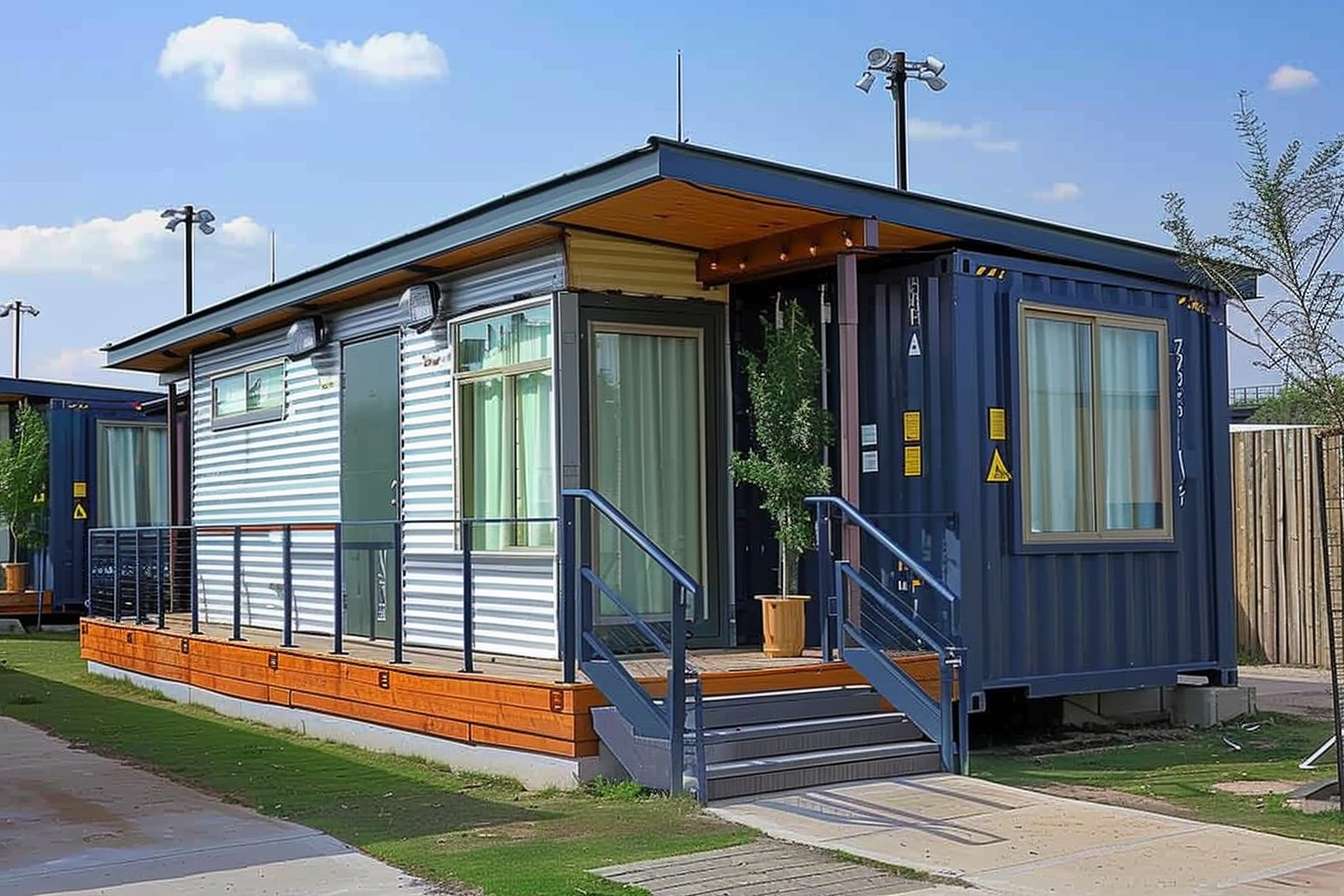Senior-Friendly Sustainable Prefab Bungalows in Australia: What to Know
Prefabricated homes are a smart choice for older adults, offering comfort, accessibility, and sustainable design. With step-free entry, wider doorways, and energy-efficient features like solar panels, these homes provide independence and convenience while reducing environmental impact. Fast construction and low-maintenance design make them a practical solution for senior-friendly housing.

What Makes Prefab Homes Suitable for Older Adults?
Prefabricated homes offer several advantages that make them particularly suitable for seniors. The single-level design of bungalow-style prefab homes eliminates the need for stairs, enhancing mobility and reducing fall risks. Additionally, prefab construction allows for precise customization to accommodate specific accessibility requirements from the initial design phase. Features such as wider doorways, zero-threshold entrances, and reinforced bathroom walls for grab bars can be integrated seamlessly during manufacturing rather than added as costly retrofits later.
The controlled factory environment where prefab homes are built ensures consistent quality and precision that can be particularly beneficial for creating accessible living spaces. Moreover, the typically shorter construction timeline means seniors can transition to their new, more appropriate housing with minimal disruption to their lives.
Sustainable Features in Modern Prefabricated Housing
Modern prefab homes in Australia increasingly incorporate sustainable design elements that benefit both the environment and residents. Energy efficiency features like superior insulation, double-glazed windows, and strategic orientation maximize natural light while minimizing heating and cooling needs—particularly important for seniors who may be more sensitive to temperature fluctuations and concerned about energy costs.
Many prefab manufacturers offer renewable energy integration options, such as pre-installed solar panels and rainwater collection systems. The controlled factory construction also generates significantly less waste than traditional building methods, with materials precisely cut and excess components often recycled. Additionally, prefab homes can be designed with sustainable materials that reduce environmental impact while creating healthier indoor environments with fewer volatile organic compounds and better air quality.
Accessibility Considerations for Senior-Friendly Modular Homes
When designing prefab homes for older adults, several accessibility features should be prioritized to ensure comfort and independence. Level, step-free entryways create seamless transitions between indoor and outdoor spaces, while wider hallways and doorways (minimum 900mm) accommodate mobility aids. Thoughtfully designed bathrooms with walk-in showers, reinforced walls for grab bars, and adequate turning space for wheelchairs are essential considerations.
Kitchen modifications such as varied counter heights, pull-out shelving, and easy-reach storage enhance usability. Additional senior-friendly features might include lever-style door handles, rocker light switches, slip-resistant flooring, and smart home technology for lighting, security, and climate control. The beauty of prefabricated construction is that these elements can be incorporated during manufacturing, ensuring they integrate seamlessly with the home’s overall design rather than appearing as afterthoughts.
Australian Regulations and Standards for Prefab Homes
Prefabricated homes in Australia must comply with the National Construction Code (NCC) and relevant Australian Standards, including those related to accessibility. The Livable Housing Design Guidelines provide voluntary standards for creating more accessible and adaptable homes, with different certification levels (Silver, Gold, and Platinum) based on the extent of accessibility features incorporated.
Local council requirements vary significantly across Australia, affecting approval processes for prefab home installations. Some regions have specific planning policies for manufactured homes, while others treat them similarly to conventional construction. Prospective buyers should investigate local regulations early in the planning process. Additionally, certain government incentives and grants may be available for seniors building or modifying homes with accessibility features, though eligibility criteria vary by state and territory.
Cost Considerations for Prefabricated Bungalows
The pricing of senior-friendly prefabricated homes in Australia varies based on size, customization level, quality of finishes, and accessibility features. Basic prefab bungalows typically start around $120,000-$150,000 for smaller models (60-80m²), while larger or more customized options with premium finishes and extensive accessibility features can range from $200,000-$400,000+.
| Provider | Base Price Range (excluding site works) | Specialty Features | Sustainability Options |
|---|---|---|---|
| Modscape | $300,000-$600,000 | High-end finishes, fully customizable accessibility | Solar integration, high thermal performance |
| Prebuilt | $180,000-$400,000 | Accessible bathroom designs, level entry | Passive solar design, high-efficiency systems |
| Archiblox | $250,000-$500,000 | Aging-in-place designs, wider doorways standard | Carbon-neutral options, sustainable materials |
| Valley Kit Homes | $120,000-$250,000 | Customizable accessibility packages | Optional solar, rainwater harvesting |
| Nova Deko | $150,000-$300,000 | Single-level designs, accessibility options | Energy-efficient designs, eco-friendly materials |
Prices, rates, or cost estimates mentioned in this article are based on the latest available information but may change over time. Independent research is advised before making financial decisions.
Additional costs to consider include site preparation ($10,000-$30,000), foundation construction ($15,000-$40,000), utility connections ($5,000-$15,000), and transport/installation ($10,000-$30,000) depending on location and site accessibility. Customizing for accessibility features typically adds 5-15% to the base price, while sustainable elements like solar systems represent additional investments that often pay dividends through reduced operating costs.
Choosing the Right Prefab Solution for Senior Living
When selecting a prefab home suitable for senior living, consider both immediate needs and potential future requirements. Start by assessing mobility and accessibility needs—current and anticipated—to determine necessary features. Research manufacturers specializing in accessible design and request to view completed projects specifically built for older adults.
Consider the home’s location carefully, evaluating proximity to healthcare facilities, public transportation, shopping, and support services. Examine the prefab company’s customization options, particularly their experience with accessibility modifications and sustainable features. Reputable manufacturers should provide detailed specifications about materials, energy efficiency ratings, and construction processes.
Finally, verify that the prefab solution complies with relevant building codes and standards for both conventional construction and accessibility. Request clear documentation about warranties, after-sales support, and the expected lifespan of various components, as these factors significantly impact long-term satisfaction with the home.
As Australia’s population continues to age, senior-friendly prefabricated housing represents a practical, sustainable solution that balances accessibility needs with environmental consciousness and modern design sensibilities.




